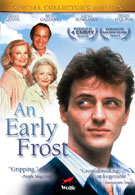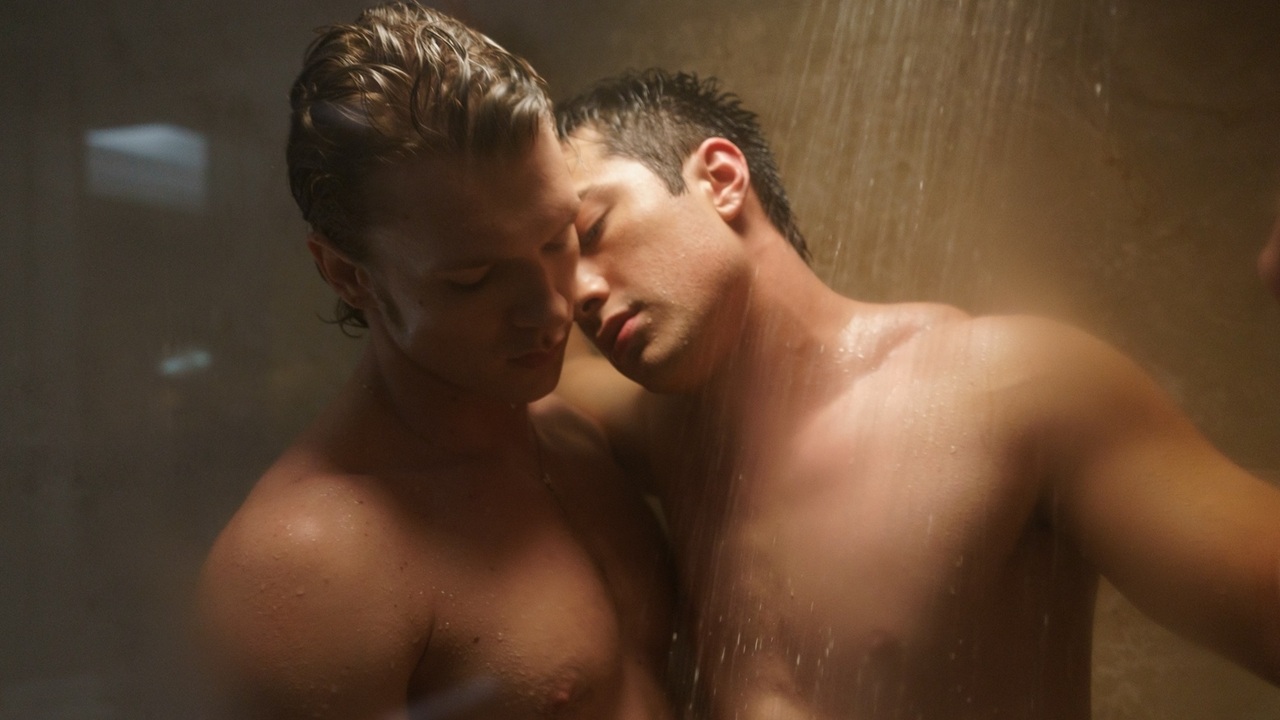In the 1980s topical subjects weren’t dealt with on big movie screens with stars like Tom Hanks or Denzel Washington. Instead they were dealt with on the small screen in made-for-television movies. An Early Frost gets the notable claim of being the first major movie, made-for-television or otherwise, to deal with the subject of the AIDS disease, although to truly appreciate the film you probably had to be alive when the 1985 movie aired. An Early Frost gets its title (as many movies do) from a line of dialogue within the film. Looking at rose bushes, the Pierson family grandmother exclaims how beautiful the flowers are, and how she hopes an early frost doesn’t come and kill them before their time. At the same time the family is dealing with another early frost: the coming out of Michael Pierson. Sadly, Michael admitting his homosexual lifestyle is not out of personal choice, but of necessity. Michael has contracted AIDS and needs the support, love, and understanding of his family.
In the early to mid 1980s little was known about AIDS. In fact, most of what was known appears within the movie during sequences that seem almost like a public service brochure attempting to spread awareness about the disease. A doctor announces they don’t know much, but they do know the numbers of AIDS patients are growing rapidly. Family, friends, and Michael himself reiterate that the disease can’t be caught just by being in a room with someone who is infected. What was known about AIDS at the time, a perspective that is thankfully no longer completely true, is that it was essentially a short term death sentence. Because of that perspective however, An Early Frost is badly outdated with a lot of the reactions within the movie now only an example of a period of time where we knew less than we do now. The message, and therefore a large part of the point of the film, is lost and invalid.
Looking at An Early Frost strictly as a film, it carries all the signs of a mid ‘80s tele-movie. It’s shot in many ways like a television show, with clear, precise act breaks to allow a word from the movie’s sponsor – ironically, something NBC had trouble finding for the movie. Sponsors pulled advertising and affiliates refused to air the film that went on to win the ratings for the night and four Emmys, with nominations for ten others. With that hard structure leaving little room for creativity, and dialogue that delivers cut and dry information about AIDS, the movie is a piece of history, although hard to watch by today’s standards. It doesn’t take much to see how time has changed the idea of movies on television, particularly with cable channels and HBO upping the ante for what a made for TV movie can be.
Despite its awkward format, the performances within An Early Frost are quite well done, with some very powerful, if not predictable, moments, as the family comes to accept Michael’s lifestyle and disease and begin to help him through it. It’s also interesting to look back at a twenty-year-old movie and see familiar faces from today’s television. Aidan Quinn gives an incredible performance as the sick Michael, and with equally strong efforts coming from Aidan Quinn and Ben Gazzara, the real “names” at the time the movie came out, as Michael’s parents. Blink and you’ll miss brief appearances by Terry O’Quinn (“Lost”) and Bill Paxton, even though the new DVD release is promoting their involvement due to their current status as larger stars. The most impressive display of acting comes from John Glover however. Known by today’s audiences as Lionel Luthor on “Smallville,” Glover personifies the educated knowledge of AIDS in this movie’s day. It’s a performance that seems strange by today’s standards, but by putting the film in its proper context one can see the true display of talent Glover shows.
Sadly that proper context is really what is needed to appreciate An Early Frost. When this movie came out AIDS was an incredibly frightening thing. People really did think they could get the disease just by breathing the same air, and patients with AIDS would be denied service by the more ignorant members of the medical community. Thankfully we have overcome most of those problems as our knowledge about the disease has increased, but that creates an odd limbo for An Early Frost. One can’t deny the performances that are on display. However, with that knowledge the message of the movie and what it was attempting to accomplish is all but completely lost. Considering that An Early Frost is no longer as valid as a message story, the DVD release for the telefilm seems an extremely strange decision. Still, it’s nice to have access to this kind of history, and as a historical piece I found a lot of value in watching this movie.
As a 1980s movie, the film is presented exactly as it was seen on television: full frame with 2.0 sound. This isn’t the kind of movie that’s going to tax your home theater, especially since the film hasn’t been remastered, causing a lot of the movie to appear a little washed out and dull by today’s standards.
I always get a little concerned with a DVD’s package offers “chapter stops” and close captioning as bonus features. As a twenty-year-old made-for-television movie however, there isn’t a lot of behind the scenes material available to put on the disc. As such, the DVD only really has three major extras: a commentary by Aidan Quinn, and writers Ron Cowen and Daniel Lipman, and a documentary entitled “Living with AIDS.” I would think the commentary might be interesting to listen to. Quinn’s portrayal of a homosexual on TV might seem plain in a day when we have “Queer Eye for the Straight Guy” and “Queer as Folk” (created and produced by Cowen and Lipman) on the airwaves, but in that day it was something unique. Sadly, the screener copy we are reviewing did not have this bonus material available, so I can’t tell you how it actually is.
Your Daily Blend of Entertainment News
Due to it’s performances, I recommend An Early Frost, especially if you enjoy viewing television legacies and looking back at what today’s actors were up to twenty years ago. Just because the message is no longer as valid doesn’t reduce the value of what was being attempted at the time, as long as you view the movie as a piece of history instead of something comparable to today’s movies.

